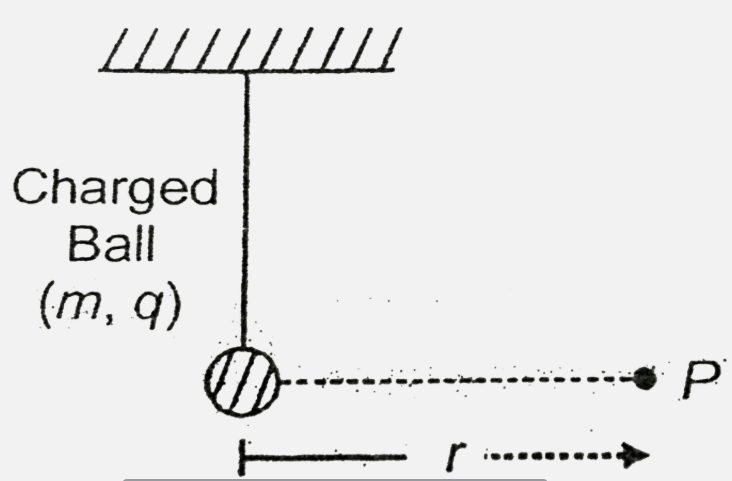The Electric field is given by →E =→Fq0, here the test charge q0 should be
a) Infinitesimally small and positive
b) Infinitesimally small and negative
only a
only 'b'
a (or) b
neither 'a' or 'b'
The correct Answer is:A
Similar Questions
The Electric field is given by →E=→Fq0, here the test charge .q0. should be
(a) Infinitesimally small and positive
(b) Infinitesimally small and negative
View SolutionIf electric field around a surface is given by ∣∣→E∣∣=Q∈ε0|A| where 'A' is the normal area of surface and Q∈ is the charge enclosed by the surface. This relation of gauss's law is valid when
View Solution
Knowledge Check
the electric field is given by →E=→Fq0 here the test charge q0 should be (a) Infinitesimally small and positive
(b) Infintestimally small and negativeAonly aBonly bCa (or) bDneither a and bthe electric field is given by →E=→Fq0 here the test charge q0 should be (a) Infinitesimally small and positive
(b) Infintestimally small and negativeAonly aBonly bCa or bDneither a or bIf electric field around a surface is given by ∣∣→E∣∣=Q∈ε0|A| where 'A' is the normal area of surface and Q∈ is the charge enclosed by the surface. This relation of gauss's law is valid when
ASurface is equipotentialBMagnitude of electric field is constantCMagnitude of electric field is constant & the surface is equipotentialDFor all Gaussian surfaces.
A positive charge particle to charge q& mass m is released at origin.There are unifrom magnetic and electric field in the space given by →E=E0ˆj&→B=B0ˆk, where E0&B0 are constants.Find the y coordinate of the particle at time t.
View SolutionA particle having mass m and charge q is released from the origin in a region in which electric field and megnetic field are given by →B=−B0ˆj and →E=→E0ˆk. Find the speed of the particle as a function of its z-coordinate.
View SolutionThe electric field at point P due to a charged ball is given by
Ep=14πε0qr2
To measure 'E' at point P, A test charge q0 is placed at point P and measure electric force F upon the test charge. Check whether Fq0 is equal to 14πε0qr2 or not .

View SolutionThe electric field at point P due to a charged ball is given by
Ep=14πε0qr2
To measure 'E' at point P, A test charge q0 is placed at point P and measure electric force F upon the test charge. Check whether Fq0 is equal to 14πε0qr2 or not .

View SolutionForce →F acting on a test charge q0 in a uniform electric field →E is
View Solution
